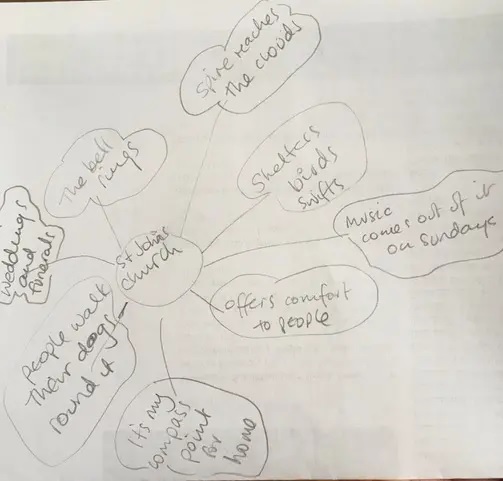Easy Poetry with Kennings
Enjoy our simple step by step Create guides devised by professional artists and foragers for Friends Around the Table. Absolutely no experience is necessary, these activities are accessible for most people and can be undertaken in your own time.
Each guide welcomes you to explore food and nature in new and exciting ways to bring some relaxing and creative activity to your day. Once you have had a go, why not share the skills you have learned with a neighbor, friend or family member!
This activity has been created by poet Lynn Whithead.
Just like the Anglo-Saxons and Norsemen before us, we litter our language with kennings—it’s the way we have of using two words where one would do!
Who hasn’t described a dull accountant as a ‘bean counter’; or a ‘pen pusher’. We’ve enjoyed that amazing song in a musical as a ‘show stopper’ and decried a loud person as a ‘motor mouth’?
In the poem ‘Beowulf’ which dates to the first century, the combination of words is used to great descriptive effect. The author uses ‘whale-road’ to mean the sea; ‘sky-candle’ for the sun and how awfully evocative is ‘raven-harvest’ to mean a corpse?
Activity
To make a short poem – decide on an element of your garden or your village. It might be a stream, a path, a bush, a church, a barn, a road – anything.
Make a spidergram to collect up all the words that describe the many things your choice of element DOES, what it offers. What many purposes it serves, if you like!
Don’t try to write the right thing. Write everything you can think of however small.
You can select out the bits you like best later. Here’s mine – I live right opposite a church.
Then try to list those some of those qualities using the double-word kenning idea;
Comfort-house
Dog-path
Chime-tower
Cloud-pointer
Swift-home
Home-mark
Play around with different words to say what you’ve written on the spidergram (I started with ‘Bell-dinger’ but thought ‘Chime-tower’ sounded more poetic).
Once you’ve got five or six kennings in the list, move them around to see if that changes the emphasis of the poem. I switched ‘Home-mark’ to the end of my list because that’s the most important element to me and I liked the two different ‘homes’ together.
You will need
Paper for making notes
A willingness to have a go
Download activity guide
Download the PDF version of this activity.
If you’ve enjoyed this DIY activity and would like to make a donation to Suffolk Artlink please visit our CAF Donate page here https://cafdonate.cafonline.org/9780#!/DonationDetails. Every penny will help.
Download pdf (209.79 KB)Similar sessions

Live Sessions
Paper Vessels at Haverhill Carers Group
Creative Boost is a series of artist led creative sessions at community groups including groups for family carers delivered as part of our Friends Around the Table project.
Part of Friends Around the Table

Live Sessions
Online Carers Session with Dean Parkin #1
Creative Boost is a series of artist led creative sessions at community groups including groups for family carers delivered as part of our Friends Around the Table project.
Part of Friends Around the Table

Live Sessions
Folklore Sculptures Session 2 at Felixstowe and Villages Family Carers Group
Creative Boost is a series of artist led creative sessions at community groups including groups for family carers delivered as part of our Friends Around the Table project.
Part of Friends Around the Table

